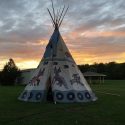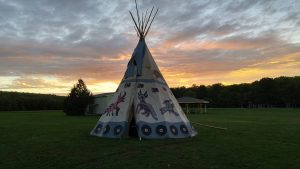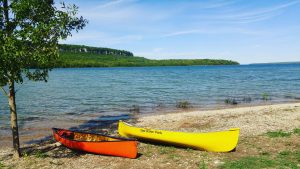Bethanie Pascutto (2L) with contributions from Elizabeth White (2L), Eva Jadine Lannon (3L), Misha Boutilier (2L), Gabrielle Thompson (2L), and Catherine Fan (2L)
If you were to ask U of T law students about the difference between Aboriginal law and Indigenous law, it is unlikely that many of us could answer the question. In law school, we learn about how the former provides certain rights to land and traditional practices, but are largely unaware of the latter. This is problematic because it reinforces the historical misconception that Indigenous peoples had no law. In reality, Indigenous law consists of sophisticated legal traditions that address many of the same issues that the common law does. Earlier this month, myself and nineteen other students from the law school had the opportunity to learn about this often-neglected area of the law through the ‘Indigenous Law in Context’ intensive course.
The intensive is a contextual and immersive approach to studying Indigenous law that was offered by the law school for the first time. It was taught by Professor John Borrows, with the assistance of Lindsay Borrows and Hannah Askew, at Cape Croker Park (Neyaashiinigmiing), on the land of Anishinaabe people. The intensive provided students with an opportunity to study on the land from which Anishinaabe law developed, learn from community elders who guide their own lives according to Anishinaabe principles, and experience the importance of ceremony to the Anishinaabe legal tradition first-hand.
Anishinaabe law is not the kind of paternalistic and overarching framework that we understand our common law system to be. Instead it is interwoven into their understanding of community, family, and the person. Anishinaabe people internalize their legal practices such that they understand every action to be an expression of their autonomy within their legal framework. From their point of view, the common law legal tradition with written laws and judges on high represents a degrading of their legal tradition. For them, “law is for the lawless.”
Professor Borrows imparted his knowledge of Anishinaabe case law through a series of stories that touched on the sources of law, including water, rocks, plants, animals, and dreams. An important element of the Anishinaabe tradition is their belief that humans exist in a reciprocal relationship with the land, and that the land itself has agency. For example, in making decisions with respect to land use, the Anishinaabe account for the needs of the rocks and water in a way that Canadian environmental law does not. Indigenous legal principles cannot be separated from the lessons offered by the land and the people who have been taught the stories upon which Indigenous law is based. Theirs is an oral tradition that draws legal principles from Anishinaabe peoples’ relationship to the natural environment, and therefore cannot be effectively passed on to students in an urban classroom.
Beyond the clear advantages to learning, the uniqueness of the instructional format had an emotional impact on the students. We lived and learned together in a manner which created connections beyond those which develop in a typical classroom setting. It was a period of self-reflection and personal growth, which left us refreshed and hopeful for the year ahead. For those of us struggling to fit in at an institution that prioritizes corporate law, this intensive made us feel that we had found a community of like-minded students to which we could belong.
We are in a privileged position as law students: we are the future of the legal profession in Canada. As such, we must do more to understand and engage with Indigenous issues. But we cannot do so without even a basic understanding of Indigenous law and its role in various cultures. Taking the first steps to learn the other legal traditions of our country will enable us to better represent Indigenous clients and add integrity and diversity to our profession.
The Anishinaabe language does not have a word for “truth,” but instead relies on the notion that everyone has their own truth, which is based on their experiences and knowledge. In a dark cave, one can only see as far as one’s light shines, and no more. It is time for the legal profession to widen its horizons and expand its notion of truth.








